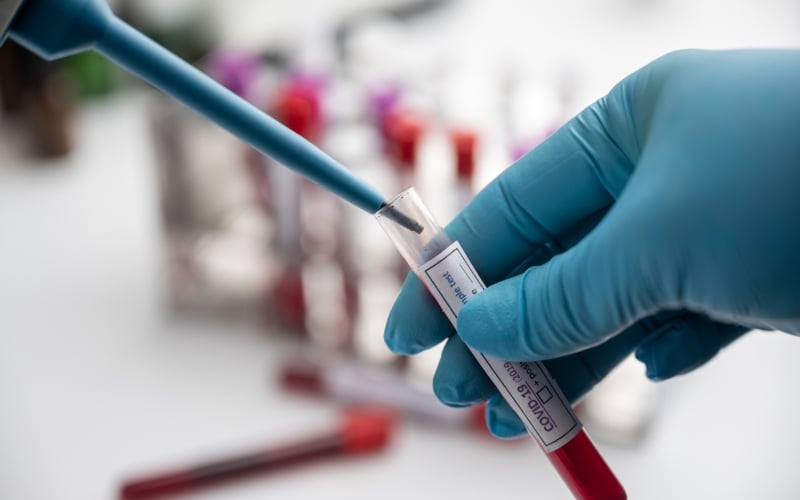—
This content is for informational purposes only and is not intended to provide medical advice.
Podiatry, the specialized field of medicine dedicated to the study, diagnosis, and treatment of disorders and conditions affecting the feet and lower limbs, has witnessed significant advancements in recent years. Thanks to the rapid progress in technology, podiatrists now have access to innovative tools and techniques that revolutionize the way they deliver care to patients. These advancements not only enhance diagnostic accuracy and treatment efficacy but also improve patient outcomes and overall experience. In this article, we will explore some of the remarkable technological advancements in podiatry and their impact on both podiatrists and patients.
We developed this article using key insights from Dr Alan Sherman who has made significant contributions to the field of podiatry through his work at PRESENT e-Learning Systems. As the co-founder and CEO of the company, he has played a crucial role in bridging the gap between traditional podiatric education and technological advancements. PRESENT e-Learning Systems provides online educational resources, including webinars, lectures, and conferences, allowing podiatrists to stay updated with the latest developments in the field. Dr. Sherman’s efforts have helped improve patient outcomes and advance the field of podiatry into the future.
1. Advanced Imaging Technologies
Accurate diagnosis is the cornerstone of effective podiatric care. Technological advancements have provided podiatrists with a range of imaging techniques that offer detailed insights into foot and lower limb conditions. High-resolution ultrasound, for example, enables podiatrists to visualize soft tissue structures and diagnose conditions like plantar fasciitis, Achilles tendonitis, and neuromas with remarkable precision. Additionally, advancements in digital radiography and magnetic resonance imaging (MRI) allow for improved assessment of bone and joint pathology, aiding in the diagnosis of fractures, osteoarthritis, and other musculoskeletal disorders.
2. 3D Printing for Custom Orthotics
Orthotics play a crucial role in addressing various foot-related problems. Traditional methods of creating custom orthotics were time-consuming and often resulted in suboptimal fit and patient comfort. However, with the advent of 3D printing, podiatrists can now produce highly accurate and personalized orthotic devices. By utilizing digital foot scans and sophisticated software, podiatrists can design and fabricate orthotics tailored to each patient’s unique foot structure. 3D-printed orthotics offer improved biomechanical support, enhanced shock absorption, and increased durability, thereby maximizing therapeutic benefits for patients.
3. Laser Technology for Nail and Skin Conditions
Nail and skin disorders, such as onychomycosis (fungal nail infections) and plantar warts, can cause significant discomfort and affect patients’ quality of life. Technological advancements, particularly laser therapy, have emerged as a safe and effective treatment option. Laser systems specifically designed for podiatric use emit precise wavelengths that target and destroy fungal organisms or viral lesions without causing harm to the surrounding tissue. Laser therapy offers several advantages over traditional treatment methods, including reduced pain, shorter treatment duration, and minimal risk of side effects.
4. Telemedicine and Remote Monitoring
Telemedicine has gained prominence in various medical fields, and podiatry is no exception. With the aid of telemedicine platforms, podiatrists can remotely assess, diagnose, and monitor patients, offering timely advice and guidance. This technology is particularly beneficial for patients who face geographical or physical challenges that prevent them from accessing in-person care. Remote monitoring devices, such as smart insoles and wearable sensors, enable podiatrists to collect gait analysis data, track foot pressure distribution, and monitor patient progress over time. This information facilitates evidence-based decision-making, personalized treatment plans, and early intervention when necessary.
5. Robotic-Assisted Surgery
Robotic-assisted surgery has transformed various surgical specialties, including podiatry. Robotic systems offer unparalleled precision and dexterity, allowing podiatrists to perform complex procedures with enhanced accuracy and reduced invasiveness. The integration of advanced imaging and robotic technology enables surgeons to plan and execute surgeries with meticulous detail, resulting in improved surgical outcomes, faster recovery, and reduced risk of complications. Robotic-assisted surgery is particularly advantageous in procedures such as arthroscopic joint surgeries, bunionectomy, and Achilles tendon repairs.
Technological advancements have ushered in a new era of podiatric care, benefiting both podiatrists and patients. With advanced imaging technologies, podiatrists can accurately diagnose foot and lower limb conditions, leading to more targeted treatment plans. 3D printing facilitates the creation of custom orthotics, ensuring optimal fit and improved patient comfort. Laser technology provides effective solutions for nail and skin disorders, while telemedicine and remote monitoring offer increased accessibility and ongoing care. Lastly, robotic-assisted surgery revolutionizes the precision and outcomes of podiatric surgeries. These advancements represent significant milestones in the field of podiatry, empowering healthcare professionals to deliver high-quality care and improving the lives of patients worldwide.
—
This content is brought to you by Andrea Mario
Photo provided by the author with written permission from the owner Tayyaba Zehra.
The post Technological Advancements in Podiatry: Enhancing Patient Care and Empowering Podiatrists appeared first on The Good Men Project.
Original Article










